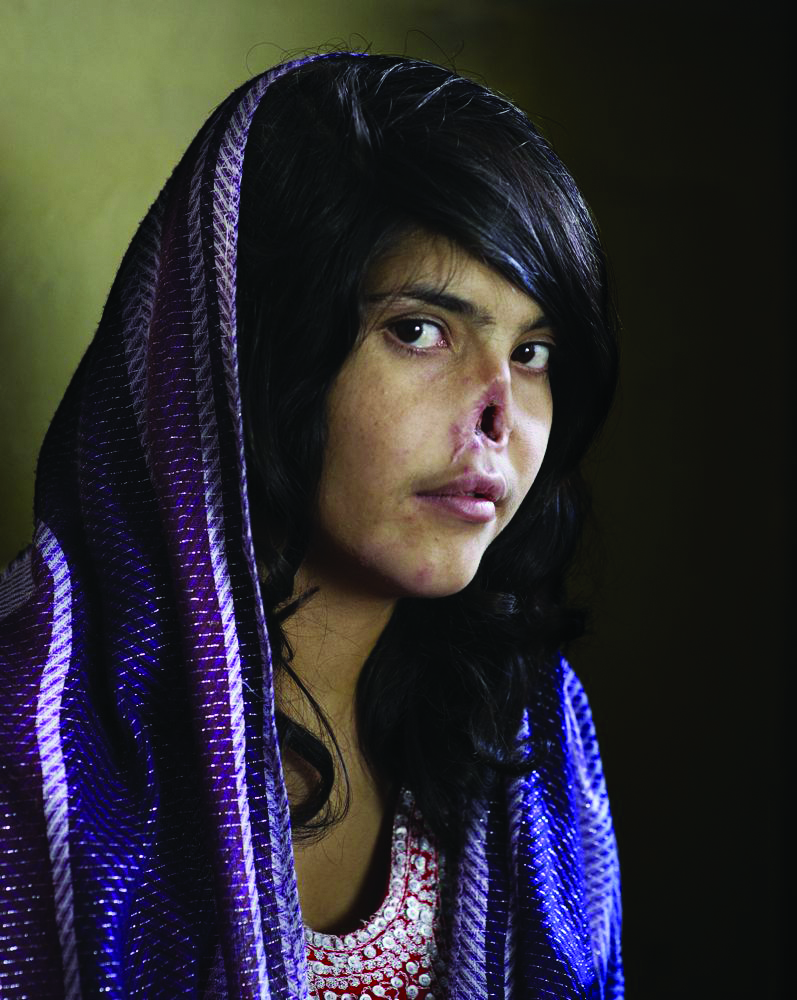You may not recognize her name, but you’ll know her photographs. Jodi Bieber won the prestigious World Press Photo of the Year, in 2010, for the photograph of a violated young woman in a refugee camp in Kabul, Afghanistan.
The picture captured the 19-year-old Bibi Aisha who was dragged by her angry in-laws to a mountain where her Taliban soldier husband cut off her nose and ears. She was left for dead as punishment for running from her marriage to escape years of abuse. Aisha survived and ended up in the refugee camp where Bieber found her in 2010.
“It took the photograph in a very plain room. When I created the picture I asked Bibi through an interpreter to close her eyes and think about her inner beauty and her inner power and look at me. She did that and I took the photo. That’s the photograph they used. But I was very worried because I took her very empowered photograph. I thought I had failed because TIME would want something more vulnerable. TIME said it was the most iconic photograph they had seen. And it went on to win the award,” says Bieber.
Bieber cut her teeth in the dangerous days leading up to South Africa’s first democratic elections on April 27, 1994. As a rookie photographer, she was sent to Ulundi, in KwaZulu–Natal, a warzone for the African National Congress and Inkatha Freedom Party.
“I definitely knew I was not the war photographer because we witnessed quite a few violent situations in Ulundi. At one time we slept on the floor of our hotel, we thought we might be assassinated,” says Bieber, the then freelance photographer at The Star, in Johannesburg.
Loading...
Bieber was born in 1966, in Hillbrow, Johannesburg. She grew up in a segregated South Africa and went to all-white schools. The system fostered rebellion in her soul.
“I don’t think art was embraced when I was growing up but I used to question things. I had a history teacher, who I am friends with now. He opened our eyes to what was happening in South Africa at the time. Remember, 1976 was when we first got television. It was a completely different time, but I remember seeing those yellow nyalas (a military vehicle), I knew something was not right in our society. So, I was very rebellious at high school. I had an opinion and I had voice, I was not just following the crowd,” she says.
“All my work deals with issues relating to broader society and a lot of it challenges the stereotypes that exist in the media,” says Bieber.
For two decades Bieber’s work changed lives around the world and she vows to document the injustices – her camera and her soul agree.
Loading...








